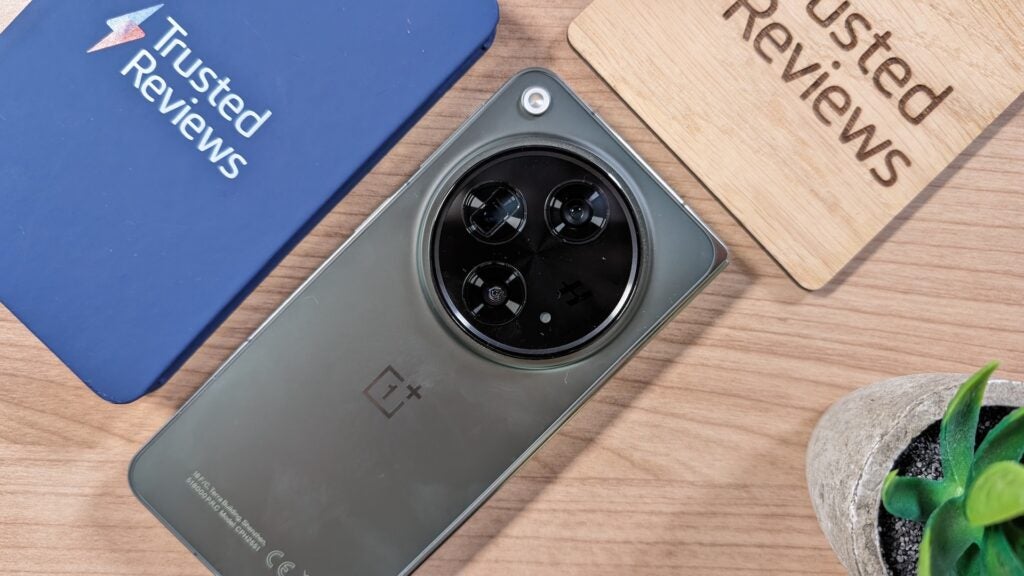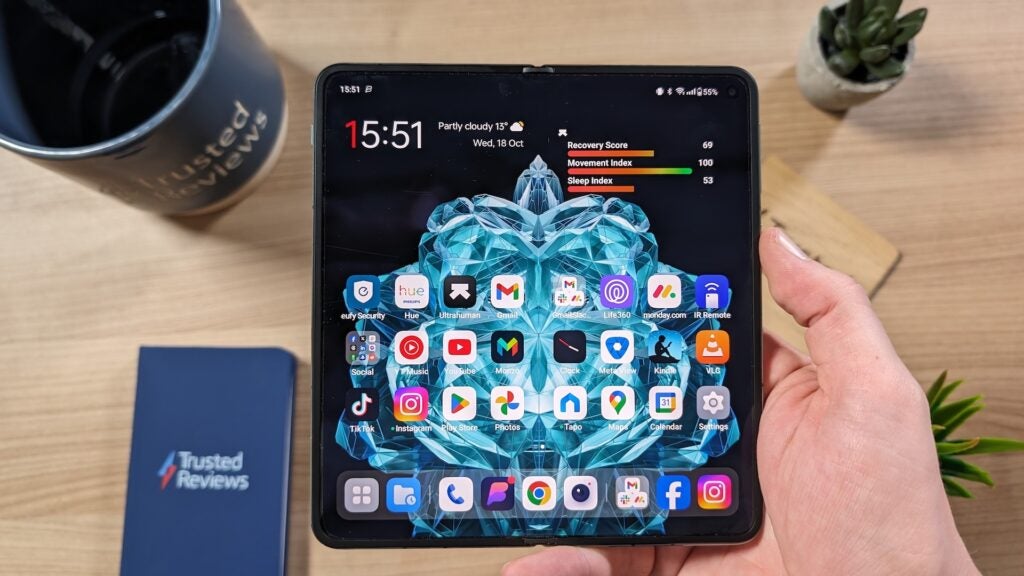OPINION: I’ve spent the past week with my SIM in the Galaxy Z Fold 6, Samsung’s new sixth-generation book-style foldable.
It’s a fine 2024 foldable, but what I wasn’t expecting was just how much it’d remind me of my love for the OnePlus Open – so much so that my SIM has left the Fold and is now at home once again in the year-old OnePlus foldable.
“But Lewis, how can you prefer a year-old foldable to one that’s just a few weeks old?!” I hear you cry. Well, it’s pretty simple really; I think the OnePlus Open is the better foldable of the two, despite the fact we’re fast approaching its first anniversary.
To better understand why, let’s first break down the good, the bad and the ugly when it comes to the Samsung Galaxy Z Fold 6. Let’s start with the good.
The Galaxy Z Fold 6’s refreshed design may not sound that exciting, but it makes a big difference to the overall look. The combination of flat edges and pointed corners makes the Z Fold 6 instantly recognisable compared to the curvier designs of almost every other book-style rival.


The slim bezel surrounding the outer and inner display also adds to the dramatic, angular look of the foldable, making it feel like a new high-end bit of tech.
Samsung has also continued to make the Fold slimmer and lighter, with this year’s option measuring in at 12.1mm and 239g, bringing it closer to the competition. Well, maybe not the impossibly thin Honor Magic V2, but it’s in OnePlus Open territory for sure.
Oh, and its IP48 protection is technically better than the IPX8 of most other foldables, though with the ‘4’ denoting that it can only protect against debris 1mm or larger, it’s still very much vulnerable to dust, dirt and sand, so it’s not as exciting an upgrade as it might first seem.


The Z Fold 6 is also hands-down the most powerful book-style foldable you’ll find right now, sporting a custom Snapdragon 8 Gen 3 for Galaxy chipset and an upgraded vapour chamber that keeps the phone cooler for longer.
Then there’s the software. Samsung’s OneUI 6.1.1 is a polished affair compared to what you’ll find from the likes of Honor. That’s not only true because of its feature-packed Galaxy AI toolset, allowing you to transcribe, translate, generate images and more on-device, but because the Z Fold 6 has the best long-term software promise of any book-style foldable right now.
While OnePlus and Honor offer four OS upgrades and five years of security patches for their respective foldables, Samsung is offering seven OS upgrades that’ll take the Z Fold 6 all the way to Android 21. That means that, like a fine wine, the Z Fold 6 should only get better with time, benefiting from all the new features of new OS upgrades.
That all sounds great, but when you look a little closer at the foldable, things get a little murkier. Key elements of the Z Fold 6 are identical to those of the Z Fold 5 despite massively increased competition in the foldable market in the past year, with many other options easily outspeccing what the Z Fold 5 had to offer. That’s a problem the Z Fold 6 now suffers from.


That includes the camera setup, which, aside from a sensor swap on the 12MP ultrawide, remains the same as the Z Fold 5, with the 10MP telephoto remaining unchanged since the Z Fold 4.
The year-old OnePlus Open, on the other hand, has one of the strongest camera offerings in a foldable right now. It has a main 48MP f/1.7 OIS-enabled camera, coupled with a high-res 64MP OIS-enabled 3x periscope lens with 6x in-sensor zoom and a 48MP 114-degree ultrawide.


Not only that, but the sensors within the main and telephoto lenses are the largest in any foldable on the market right now, and the quality of the images I’ve taken on it reflects that.
I also love the OxygenOS experience and the Open Canvas multitasking experience in particular.
It not only lets you use standard split-screen multitasking like other foldables, but it also allows you to quickly switch between three full-screen apps for more efficient use, and you can save these app groups to the home screen for quick access later. Small details like that that truly make the Open experience what it is.
To be fair, I could’ve learnt to live without the very best cameras and handy software tweaks, but there was one dealbreaker that pushed me back into the loving embrace of the OnePlus Open; the screens, both external and internal.


Even though we’re now six generations into Samsung’s book-style foldable, the Z Fold 6 still has a pretty noticeable crease. It’s not only easily spotted when looking at the inner 7.6-inch AMOLED screen, but the dip is deeper than what you’ll find on the OnePlus Open, the Honor Magic V2 and practically any other 2024 foldable.
I can’t quite understand why Samsung seems to struggle with this more than most of the competition, but it’s not what you want to see on a £1799/$1899 foldable.


And despite a slight change in aspect ratio, the outer screen remains oddly tall and slim. It’s still fine for quickly replying to WhatsApp messages and checking Google Maps, but the narrow form factor means it’s not ideal for displaying videos or playing games. For that, you’ve got no choice but to use the inner screen.
The OnePlus Open’s cover screen, on the other hand, sports the same aspect ratio as the OnePlus 12, meaning it’s very much a regular smartphone screen that’s well suited to gaming, scrolling through TikTok and whatever else you want to get up to.


It means you’re no longer forced to use the inner display, instead picking and choosing when to unfold based on what you’re doing.
Couple that with a bigger battery – 4805mAh, compared to the Z Fold’s 4400mAh – and much faster charging at 67W compared to 25W, along with smaller elements like the famous OnePlus volume switch, a cheaper price tag (especially almost a year after release), and a slightly thinner, lighter design, and the OnePlus Open has my vote every time.
That’s where my SIM will be staying comfortably for now, anyway.




